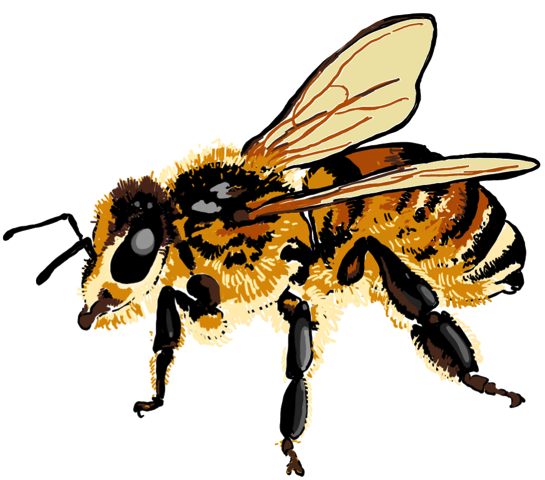
Do bees get the flu? New Iowa State University research shows honey bee viruses are found in wild bees, though it is unclear how much this contributes to declines in wild bee populations.
Adam Dolezal, a postdoctoral research associate, and Amy Toth, an associate professor, both in the Department of Ecology, Evolution and Organismal Biology, along with several collaborating researchers, recently published "Honey Bee Viruses in Wild Bees: Viral Prevalence, Loads, and Experimental Inoculation," in PLOS ONE, the world’s first multidisciplinary open access journal. The research investigates viruses in both honey bees and wild bees.
"A bee is a bee to most people,” Dolezal said. “They look very similar and they do very similar things, but their biology is very different and the concerns about them are very different.”
The research is complex, but a new journal is making research like this accessible to middle and high school students across the world. Science Journal for Kids uses real research papers — like Dolezal and Toth’s — to create articles with lesson plans for kids featuring the latest peer-reviewed research papers on environmental topics.
Tanya Dimitrova, a former science teacher in Austin, Texas, founded the online journal two years ago. Science Journal for Kids is especially popular with science teachers who want to share the latest scientific discoveries with their students and has about 20,000 visits per month from more than 160 countries around the world.
"What’s the point of doing science research if we cannot communicate and share the results?" Dimitrova said. "Ultimately, kids have the right to know what the state of the world they are inheriting is in. This was my motivation to start the journal."
While looking to add research about pollinators, which are well known for their importance in growing our food and for their vulnerability to diseases in the past few years, she came across Dolezal and Toth’s paper. Dimitrova and her colleagues worked with Dolezal to translate the research into a format that is accessible and entertaining. The result gives kids another reason to love science, and gives Iowa State research a whole new audience.
Honey bees, an introduced species used in agriculture, are largely managed by humans. But native bees are wild animals posing a conservation issue. The lesson plan provided by Science Journal for Kids walks students through the entire research process, including methods, findings and discussion, helping them think critically about the research and what follow-up research could be done.
“A key part of teaching students science literacy and critical thinking skills is providing them with materials that help them learn how scientific findings are produced, and put themselves in the shoes of an investigator,” Dolezal said. “Hopefully materials like this, covering new research and asking students to think and make predictions about research, can be a valuable tool for educators.”